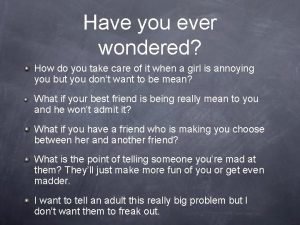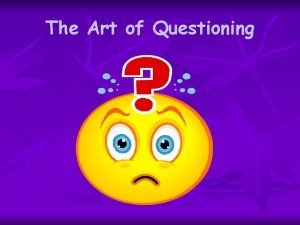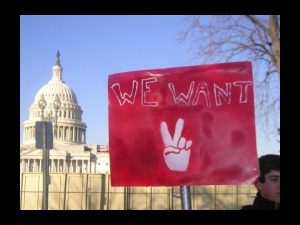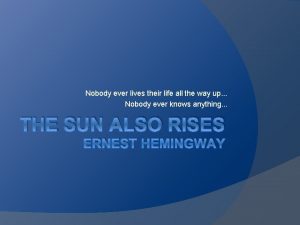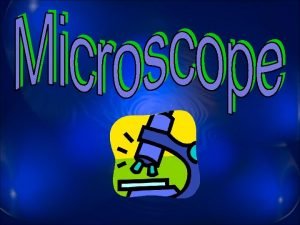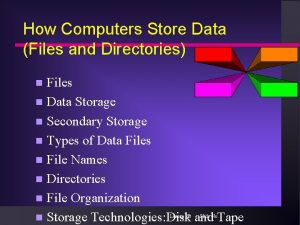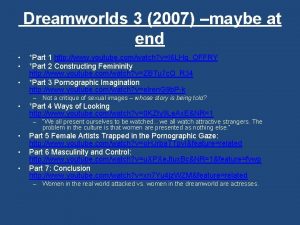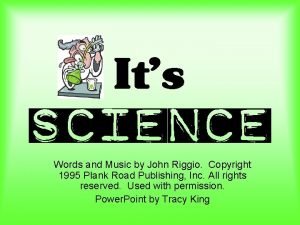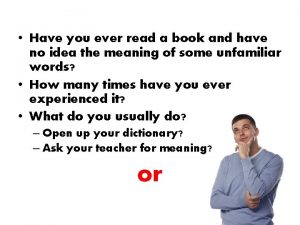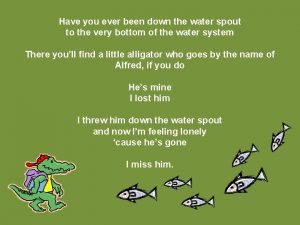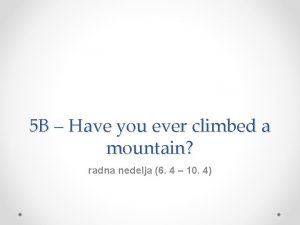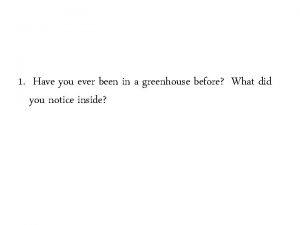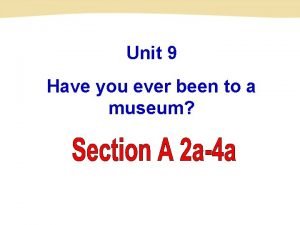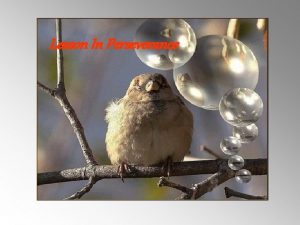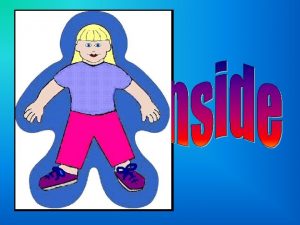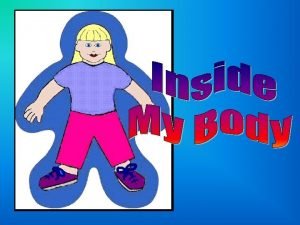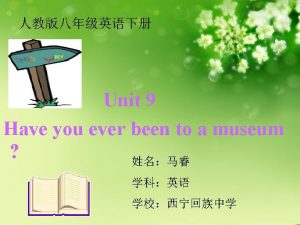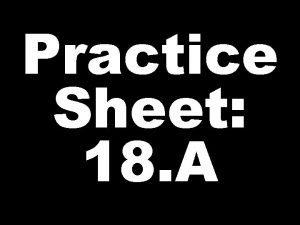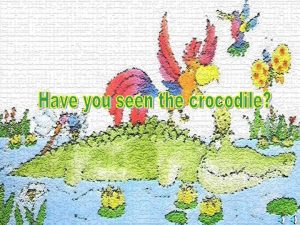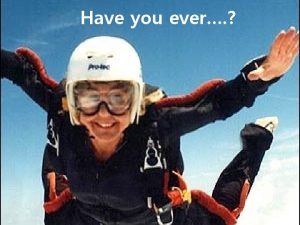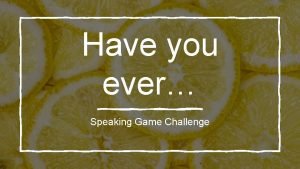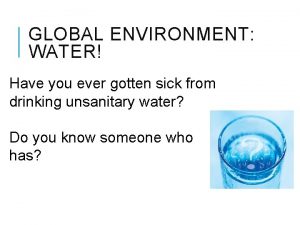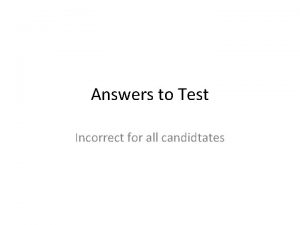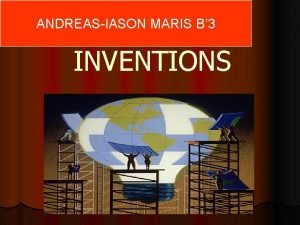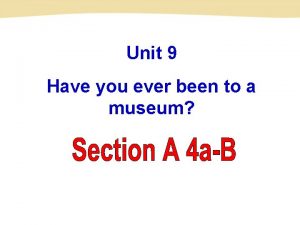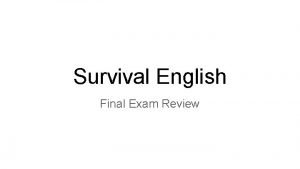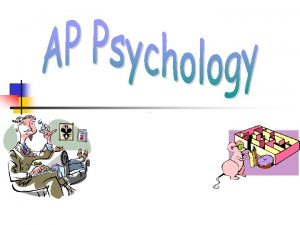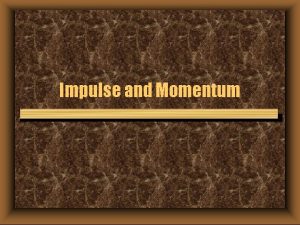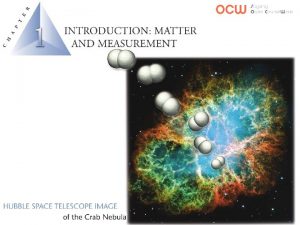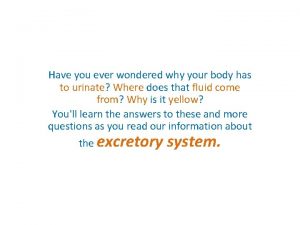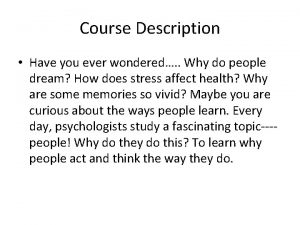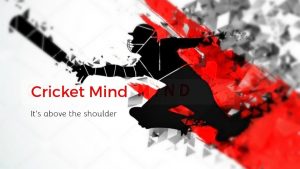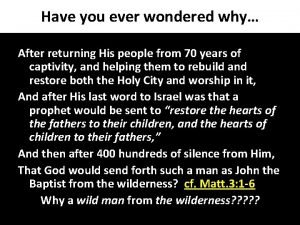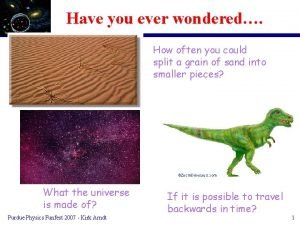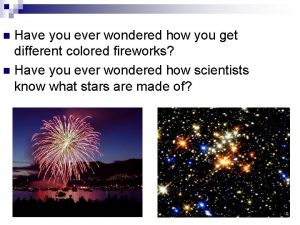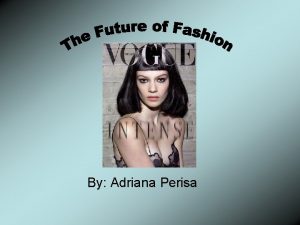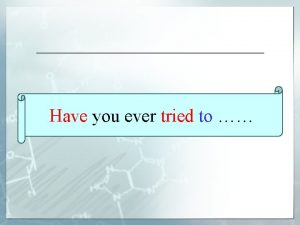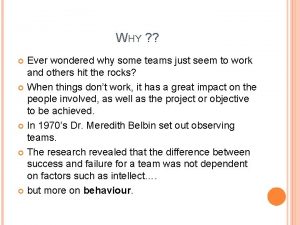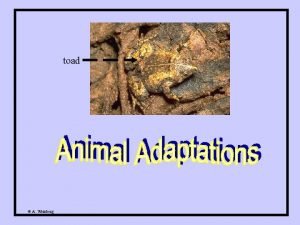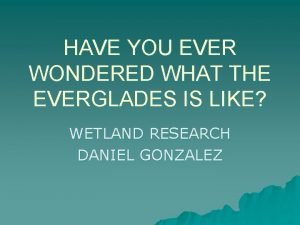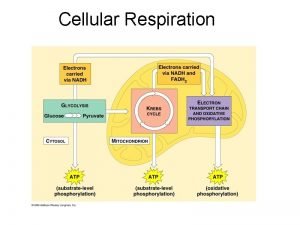Introduction Motivation Have you ever wondered Why did













































- Slides: 45

Introduction • Motivation Have you ever wondered – “Why did they do that? ” or, “Why did I just do that? ”

Motivational Conflicts • • Approach-Approach-Avoidance-Avoidance Double Approach-Avoidance

Instincts and Evolutionary Psychology • Instinct (fixed pattern) – Instincts in animals & humans – Genetically programmed from birth to engage in certain behaviors – Related to survival – natural selection – Primary Drives

Instincts and Evolutionary Psychology • Advantages: – Logical, relates human & animal behavior • Disadvantages: – Many behaviors can’t be simplified to this degree • Theorists: – Followers of Darwin – Evolutionary Psychologists – William Mc. Dougall

Drives and Incentives • Drive-reduction theory – Homeostasis – Need – Drive reduction

Drive Reduction Theory • Advantages: – Consistent with physiological demands of the body • Disadvantages: – Many behaviors not explained by drive or homeostasis • Theorists: – Physiological Psychologists – Psychoanalytic Psychologists • Freud

Drives and Incentives • Incentive – Positive and negative – External goals and rewards – Secondary Drives

Incentive Motivation • Advantages: – Directly observable, measurable • Disadvantages: – Can’t explain delays or behavior with no clear external reward • Theorists: – Behavioral Psychologists – B. F. Skinner

A Hierarchy of Motives • Maslow’s hierarchy of needs – Variations in the hierarchy

A Hierarchy of Motives

The Need to Belong • Aiding survival • Wanting to belong • Sustaining relationships • The pain of ostracism – ostracism

Maslow’s Hierarchy of Needs • Advantages: – Comprehensive, incorporates drive theory, addresses multiple motivators • Disadvantages: – Not researchable, little weight given to incentives, self-actualization too hard to define • Theorists: – Humanistic Psychologists – Abraham Maslow

Arousal Theory Optimum level of arousal – Sensation seekers – Individuals who have a biological need for higher levels of stimulation than do other people

Arousal & Performance • Inverted “U” function – Describes the relationship between arousal and performance; both low and high levels of arousal produce lower performance than does a moderate level of arousal Copyright © Allyn & Bacon 2007

Arousal, Performance, and the Inverted “U” Yerkes-Dodson Law: We perform our best when we are operating at a moderate level of arousal How could this connect to social facilitation/inhibition? Copyright © Allyn & Bacon 2007

Arousal Theory • Advantages: – Explains behavior that has no clear incentive • Disadvantages: – Adds to homeostasis but doesn’t replace it, not a comprehensive theory • Theorists: – Physiological Psychologists

Cognitive/Psychological Theory • An individual’s own thoughts, desires, goals, & expectations impact their motivation • Extrinsic vs. intrinsic motivation • Overjustification Effect – external reward decreases intrinsic motivation • Internal vs. external locus of control • Self-serving bias • Achievement Motivation – desire to accomplish tasks & excell

Cognitive/Psychological Theory • Advantages: – Relates to incentive theory & internalizes it, supported by research • Disadvantages: – Doesn’t explain all motivations, some people don’t seem to fit this model • Theorists: – Cognitive Psychologists – David Mc. Clelland (achievement motivation)

Apply Theories • You must sell a new product. How can you use theories of motivation to make your product stand out from the MANY other brands already available? • Create an advertisement using up to four of the motivation theories: – – – Instinct Theory Drive-Reduction Theory Incentive Theory Maslow’s Hierarchy of Needs Arousal Theory Cognitive/Psychological Theory

Apply Theories Example: toothpaste Motivation: Drive Reduction Theory (pain reduction) Product Name: Relief Advertising Campaign: Tired of feeling that sharp pain every time you bite into something sweet? Use this toothpaste to feel an instant soothing sensation and relieve your pain

The End

• Types of Files Teacher Information – This presentation has been saved as a “basic” Powerpoint file. While this file format placed a few limitations on the presentation, it insured the file would be compatible with the many versions of Powerpoint teachers use. To add functionality to the presentation, teachers may want to save the file for their specific version of Powerpoint. • Animation – Once again, to insure compatibility with all versions of Powerpoint, none of the slides are animated. To increase student interest, it is suggested teachers animate the slides wherever possible. • Adding slides to this presentation – Teachers are encouraged to adapt this presentation to their personal teaching style. To help keep a sense of continuity, blank slides which can be copied and pasted to a specific location in the presentation follow this “Teacher Information” section.

Teacher Information • Hyperlink Slides - This presentation contain two types of hyperlinks. Hyperlinks can be identified by the text being underlined and a different color (usually purple). – Unit subsections hyperlinks: Immediately after the unit title slide, a page (slide #3) can be found listing all of the unit’s subsections. While in slide show mode, clicking on any of these hyperlinks will take the user directly to the beginning of that subsection. This allows teachers quick access to each subsection. – Bold print term hyperlinks: Every bold print term from the unit is included in this presentation as a hyperlink. While in slide show mode, clicking on any of the hyperlinks will take the user to a slide containing the formal definition of the term. Clicking on the “arrow” in the bottom left corner of the definition slide will take the user back to the original point in the presentation. These hyperlinks were included for teachers who want students to see or copy down the exact definition as stated in the text. Most teachers prefer the definitions not be included to prevent students from only “copying down what is on the screen” and not actively listening to the presentation. For teachers who continually use the Bold Print Term Hyperlinks option, please contact the author using the email address on the next slide to learn a technique to expedite the returning to the original point in the presentation.

Teacher Information • Continuity slides – Throughout this presentation there are slides, usually of graphics or tables, that build on one another. These are included for three purposes. • By presenting information in small chunks, students will find it easier to process and remember the concepts. • By continually changing slides, students will stay interested in the presentation. • To facilitate class discussion and critical thinking. Students should be encouraged to think about “what might come next” in the series of slides. • Please feel free to contact me at kkorek@germantown. k 12. wi. us with any questions, concerns, suggestions, etc. regarding these presentations. Kent Korek Germantown High School Germantown, WI 53022 262 -253 -3400 kkorek@germantown. k 12. wi. us

Division title (green print) subdivision title (blue print) • xxx – xxx

Division title (green print) subdivision title (blue print) Use this slide to add a table, chart, clip art, picture, diagram, or video clip. Delete this box when finished

Definition Slide = add definition here

Definition Slides

Motivation = a need or desire that energizes and directs behavior.

Instinct = a complex behavior that is rigidly patterned throughout a species and is unlearned.

Drive-reduction Theory = the idea that a physiological need creates an aroused tension state (a drive) that motivates an organism to satisfy the need.

Homeostasis = a tendency to maintain a balanced or constant internal state; the regulation of any aspect of body chemistry, such as blood glucose, around a particular level.

Incentive = a positive or negative environment stimulus that motivates behavior

Hierarchy of Needs = Maslow’s pyramid of human needs, beginning at the base with physiological needs that must first be satisfied before higher-level safety needs and then psychological needs become active.

Glucose = the form of sugar that circulates in the blood and provides the major source of energy for body tissues. When its level is low, we feel hunger.

Set Point = the point at which an individual’s “weight thermostat” is supposedly set. When the body falls below this weight, an increase in hunger and a lowered metabolic rate may act to restore the lost weight.

Basal Metabolic Rate = the body’s resting rate of energy expenditure.

Anorexia Nervosa = an eating disorder in which a person (usually an adolescent female) diets and becomes significantly (15 percent or more) underweight, yet, still feeling fat, continues to starve.

Bulimia Nervosa = an eating disorder characterized by episodes of overeating, usually highcalorie foods, followed by vomiting, laxative use, fasting, or excessive exercise.

Binge-eating Disorder = significant binge-eating episodes, followed by distress, disgust, or guilt, but without the compensatory purging, fasting, or excessive exercise that marks bulimia nervosa.

Sexual Response Cycle = the four stages of sexual responding described by Masters and Johnson – excitement, plateau, orgasm, and resolution.

Refractory Period = a resting period after orgasm, during which a man cannot achieve another orgasm.

Estrogens = sex hormones, such as estradiol, secreted in greater amount by females than males and contributing to female sex characteristics. In nonhuman female mammals, estrogen levels peak during ovulation, promoting sexual receptivity.

Testosterone = the most important of the male sex hormones. Both males and females have it, but the additional testosterone in males stimulates the growth of the male sex organs in the fetus and the development of the male sex characteristics during puberty.

Sexual Orientation = an enduring sexual attraction toward members of either one’s own sex (homosexual orientation) or the other sex (heterosexual orientation).
 Have you ever wondered why some people
Have you ever wondered why some people Have you ever wondered
Have you ever wondered The art of questioning
The art of questioning Did you ever have to finally decide
Did you ever have to finally decide For many years people have wondered
For many years people have wondered Hey bye bye
Hey bye bye Ever ancient ever new
Ever ancient ever new Clarified it
Clarified it Ever ancient ever new
Ever ancient ever new Ever tried ever failed no matter
Ever tried ever failed no matter Did you ever think
Did you ever think Dreamworlds 3
Dreamworlds 3 Have you ever met a famous person?
Have you ever met a famous person? Did you ever wonder
Did you ever wonder Have you ever done something dangerous
Have you ever done something dangerous Shoplifting facts
Shoplifting facts Jackie was filled with mortification
Jackie was filled with mortification Folkways
Folkways Have you ever climbed a mountain?
Have you ever climbed a mountain? Have you ever been to the water spout
Have you ever been to the water spout Have you ever ridden a camel?
Have you ever ridden a camel? Have you ever climbed a mountain
Have you ever climbed a mountain Have you ever seen a “greenhouse”?
Have you ever seen a “greenhouse”? Have you seen this area before?
Have you seen this area before? Have you ever watched people
Have you ever watched people What is stanza in poetry
What is stanza in poetry How are you
How are you Have you ever been to zoo
Have you ever been to zoo Have you ever seen a penguin come to tea
Have you ever seen a penguin come to tea You ever looked in the mirror and thought
You ever looked in the mirror and thought Have you ever looked
Have you ever looked The glass castle discussion questions by chapter
The glass castle discussion questions by chapter Have you ever thought about questions
Have you ever thought about questions Have you ever been to a museum
Have you ever been to a museum Have you ever ridden a horse before in asl
Have you ever ridden a horse before in asl Have you ever seen a crocodile
Have you ever seen a crocodile Have you ever been bungee jumping
Have you ever been bungee jumping Have you ever challenge
Have you ever challenge Have you ever been sick?
Have you ever been sick? The decorated roof of the ancient palace was
The decorated roof of the ancient palace was Have you ever thought about inventing something
Have you ever thought about inventing something Have you ever had the feeling
Have you ever had the feeling Have you ever been to a museum
Have you ever been to a museum Have you ever questions
Have you ever questions Have you ever fly
Have you ever fly Have you ever read oliver twist
Have you ever read oliver twist

